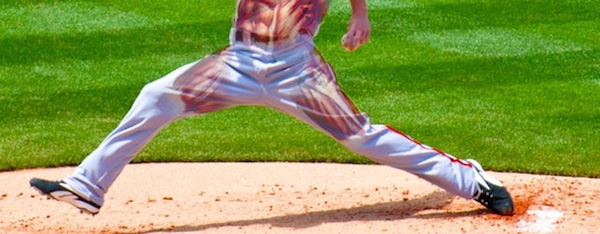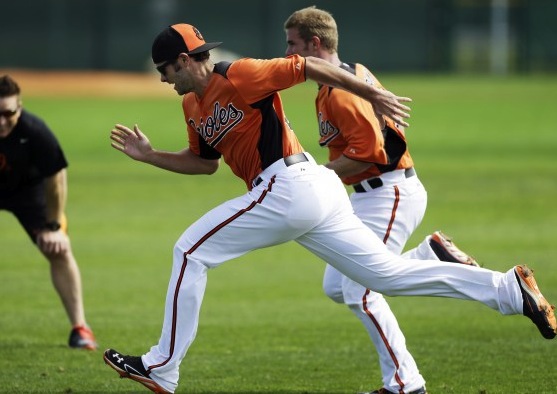Baseball, often considered a game of skill and strategy, is equally demanding from a physical perspective. Beneath the surface of calculated decisions lies a sport that requires athletes to possess a unique combination of strength, power, speed, and size. Whether you’re watching a pitcher wind up, a batter take a swing, or an outfielder track down a fly ball, the athleticism on display is a result of years of conditioning and training. But what exactly are the physical demands of baseball? Let’s take a closer look at the specific attributes needed to excel on the diamond.
Strength and Power: The Foundation of Baseball

Strength and power are the backbone of a baseball player’s performance. From the explosive swing of the bat to the quick acceleration on the base paths, the ability to generate force is key. Strength, particularly in the core, legs, and upper body, provides the foundation for many actions in baseball.
- Rotational Power: Baseball is unique in that it relies heavily on rotational movements, especially when it comes to hitting and pitching. A batter’s swing is powered by the ability to rotate the hips, core, and shoulders in one fluid motion. This rotational power is not just about brute strength but also timing and coordination. The ability to generate torque—transferring force from the lower body through the core to the bat—allows players to hit with both speed and power.
- Leg Strength: For both pitchers and position players, lower-body strength is essential. Pitchers rely on powerful legs to drive off the mound, generating velocity and control. Fielders depend on strong legs for quick lateral movements, while base runners need explosive leg strength to accelerate out of the batter’s box and around the bases.
Arm Strength and Accuracy: The Art of the Throw
While leg and core strength are fundamental, baseball is perhaps most famously defined by the arms—whether it’s firing a pitch at 95 mph or making a perfect throw from the outfield to home plate.
- Arm Strength: A baseball player’s arm must be powerful yet precise. Outfielders and infielders alike must throw with velocity across long distances while maintaining accuracy. This requires not only upper-body strength but also refined mechanics and coordination between the arm, shoulder, and torso. Pitchers, in particular, develop a finely-tuned arm capable of producing high velocities, while position players focus on being able to quickly release the ball with strength and accuracy.
- Accuracy: Precision is equally important. A strong arm is useless without accuracy. Outfielders need to hit cutoff men, infielders need to make pinpoint throws to first base, and pitchers need to locate their pitches with surgical precision. The ability to consistently control the ball under pressure separates the good from the great.
Speed and Agility: Moving with Purpose
Speed in baseball doesn’t only refer to base stealing or sprinting to first base. It encompasses quickness in various movements—whether reacting to a hit ball or moving laterally to field a grounder.
- Acceleration: Unlike other sports that may require long-distance running, baseball is more about short bursts of speed. Whether it’s a batter sprinting to beat a throw to first base or a base runner trying to steal second, quick acceleration is key. Players train for these short, powerful bursts with sprint drills and plyometrics.
- Agility: Players also need to be agile, capable of reacting quickly to changing situations. Infielders, for example, must be able to move laterally in an instant to field a ground ball, while outfielders need to change direction on the fly to track down a hit. Agility drills, which improve reaction times and quick changes of direction, are integral to baseball training.
Flexibility and Mobility: The Often Overlooked Component
In baseball, flexibility is often overlooked but is just as important as strength and speed. The ability to move through a full range of motion without restriction is crucial to performance and injury prevention.
- Shoulder Mobility: Given the repetitive throwing motions in baseball, shoulder mobility is critical, especially for pitchers. Proper flexibility ensures that a player can generate power without placing undue stress on the shoulder, preventing common injuries like rotator cuff tears.
- Hip and Thoracic Spine Flexibility: The ability to rotate the hips and upper back is key in both hitting and throwing. Flexibility in these areas allows for smooth, powerful rotations without compensatory movements that could lead to injury. Dynamic stretching and yoga are often incorporated into baseball conditioning programs to maintain this flexibility.
Size: Bigger Doesn’t Always Mean Better
Baseball players come in all shapes and sizes, from power hitters like Aaron Judge to speedy infielders like José Altuve. While size can be an advantage—particularly for pitchers and power hitters—there’s no one-size-fits-all formula in baseball. What matters most is how well players can translate their size into power, speed, and agility.

- Power vs. Agility: Larger players, particularly in power positions like first base or corner outfield, may focus on generating tremendous power through their size. Meanwhile, smaller players may rely more on agility and speed to make an impact. The beauty of baseball is that it accommodates a wide range of body types, each contributing to the game in different ways.
Intangibles: Skills, Work Ethic, and Mental Toughness
Beyond physical traits, baseball demands a sharp mental edge and an unwavering work ethic. The skills required to excel in baseball are honed through countless hours of practice, but the mental aspects are what often distinguish the elite from the average.
- Hand-Eye Coordination: Perhaps the most critical skill in baseball is the ability to make contact with the ball. A batter’s success hinges on exceptional hand-eye coordination, allowing them to track a pitch moving at upwards of 90 mph and connect with it in a split second. This coordination extends to fielding as well—reacting to balls hit at various angles and speeds requires precision and quick reflexes.
- Pitch Recognition and Reaction Time: Batting isn’t just about power; it’s about recognizing pitch types—fastballs, sliders, curveballs—and adjusting quickly. Great hitters develop a keen eye for these subtleties, reacting in milliseconds. This mental processing skill, developed over years, can mean the difference between a strikeout and a home run.
- Work Ethic: Baseball is a game of repetition and refinement. Success at the plate or on the mound rarely happens overnight. It takes years of consistent practice, from perfecting a swing to refining a pitching motion. Elite players spend countless hours in the batting cage, weight room, and bullpen. That discipline and work ethic separate those who merely play the game from those who master it.
- Mental Toughness: Baseball is a game of failure. Even the best hitters in the game fail 7 out of 10 times. Dealing with this level of failure requires mental toughness and resilience. Players must stay focused through slumps, bad games, and long seasons. The ability to bounce back from adversity is essential to success in baseball, whether for a pitcher who gives up a home run or a batter who strikes out with the bases loaded.
- Baseball IQ: An often-overlooked intangible is the player’s knowledge of the game. Understanding situations, knowing when to make certain plays, and anticipating what will happen next are critical elements that come from years of experience. Players with high baseball IQ are often one step ahead of the competition, knowing how to read the game and make quick, strategic decisions on the field.
Conclusion
The physical demands of baseball are as varied as the positions on the field. It’s a sport that requires athletes to excel in strength, power, speed, and flexibility, often with specialized requirements for different roles. But beyond these physical traits, it’s the intangibles—mental toughness, skill, and work ethic—that separate the greats from the rest. Whether it’s the rotational power of a batter, the arm strength and accuracy of a fielder, the agility and speed of a base runner, or the mental resilience to push through adversity, baseball challenges the body and mind in complex ways. With its unique combination of athleticism, skill, and intellect, baseball continues to be a game that pushes players to develop both physically and mentally, making it one of the most demanding and rewarding sports in the world.




